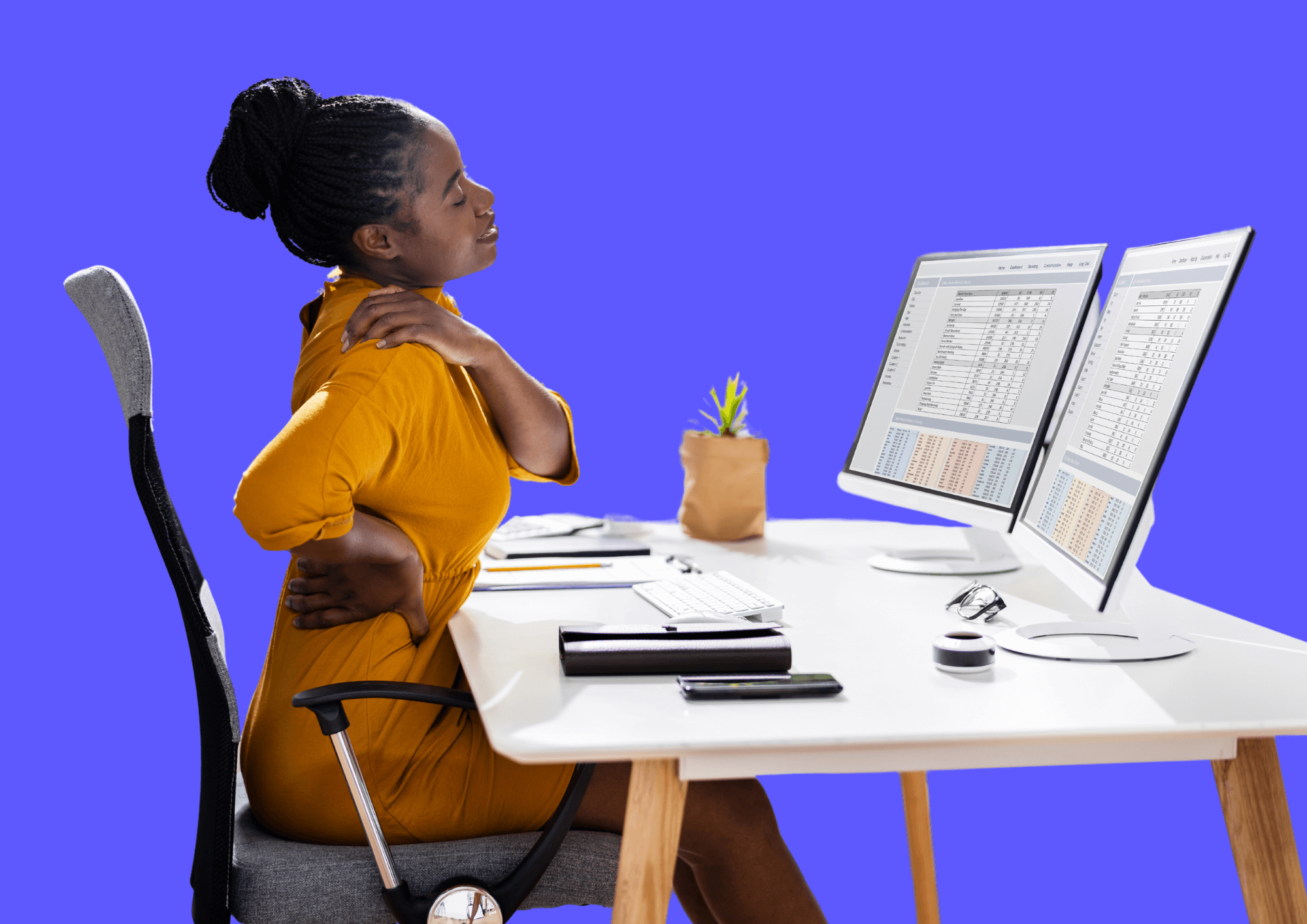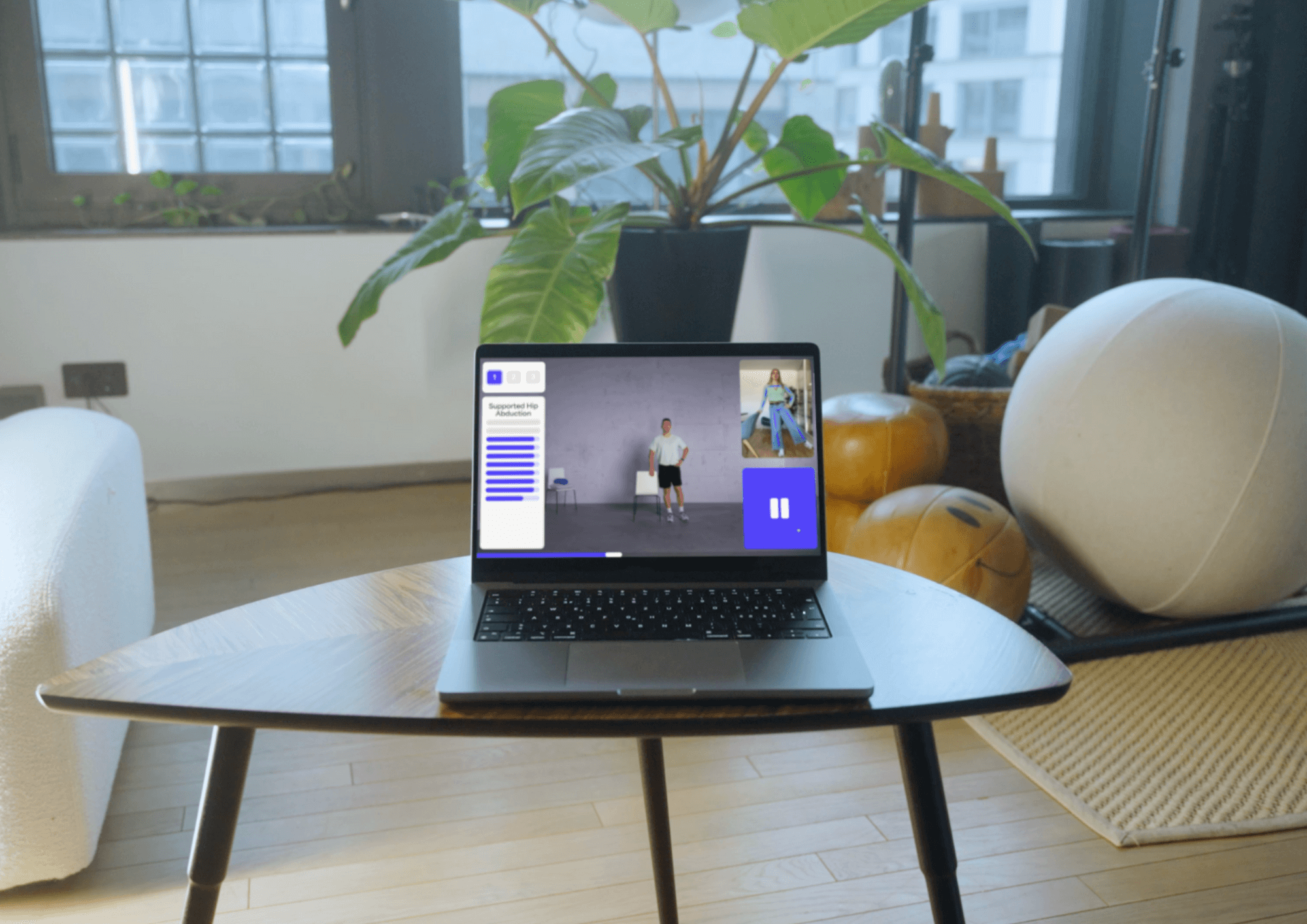Back pain in the upper back: This is how to get rid of it
Pain in the upper back can have various causes. Although it is often harmless, we don't want to put up with it any longer than necessary. Find out here what measures you can take to get rid of this unwanted companion!

Middle or upper back pain is not quite as common as neck or lower back pain - but that doesn't make it any less bothersome. The good news? Pain in the middle and upper back is often caused by muscle tightness and misaligned posture, so it is very rarely caused by serious illnesses.
In this article, we discuss where pain in the thoracic spine comes from, how you can best treat it and ways to prevent it in the future. The tips and health information in this article are intended to give you an insight into the topic, but they are no substitute for medical treatment. Please consult a healthcare professional if you are suffering from very severe pain or if the pain has persisted for a long time.
Causes of pain in the upper back
Various causes can be responsible for pain in the upper back. They range from harmless muscle tension to serious illnesses or injuries.
Muscle tension in the upper back muscles
The most common cause of back pain in the thoracic and/or cervical spine is muscle tension. The reason for this tension is poor posture, incorrect strain or lack of exercise.
- Poor posture:
A typical bad posture is, for example, a hunched back: This posture is characterized by the shoulders and neck being permanently pulled forward, resulting in tension in the muscles. In many cases, a hunched back is due to our modern lifestyle: We spend a large part of the day with a rounded back in front of the computer or looking at our cell phone with our head tilted forward. Hello neck pain! - Incorrect strain:
Incorrect strain such as incorrect lifting of heavy objects, excessive strength training, poor sleeping habits or regular one-sided strain (e.g. carrying a child on the hip) can also lead to upper back pain. Prolonged muscle tension can lead to hardening, shortening, impaired blood circulation or overtension of the muscles in the shoulder and chest area. As a result, more pressure is built up on the intervertebral discs, sternum, diaphragm and joints, which can affect mobility. - Lack of exercise:
Similar to the previously mentioned point, lack of movement leads to stiffening of the muscles, fascia and vertebral joints, which can lead to poor posture or strain. In addition, a lack of movement means that the tissue is not supplied with sufficient blood, which can lead to a reduced supply of nutrients. This in turn leads to pain and stiffness.

Diseases or injuries of the spine
Diseases or injuries to the spine can also lead to acute or chronic back pain in the thoracic spine and cervical spine. We have summarized the most common ones below:
- Degenerative diseases:
Degenerative diseases such as osteoarthritis, rheumatism or osteoporosis can develop over time due to wear and tear of the spine. They manifest themselves in pain and restricted movement in the back, as the health of the intervertebral discs and facet joints deteriorates and their normal function is impaired. - Misalignments of the spine:
Misalignments of the spine usually occur in the upper back. Scoliosis, for example, is a lateral curvature of the spine that can lead to uneven loading of the vertebral bodies and the surrounding muscles. This in turn results in muscle tension and pain in the upper back, especially if the scoliosis progresses or remains untreated. - Blockages of the rib-vertebral joints:
Vertebral blockages can be caused by sudden movements, overloading or injury and can lead to pain in the upper back and neck or shoulder area, especially when breathing or moving the arms. - Herniated disc:
A herniated disc occurs when the inner part of a disc breaks through the outer layer and presses on the surrounding nerves. A herniated disc can occur in the lumbar spine (lower back) as well as in the thoracic or cervical spine (middle to upper back, neck). The herniated disc is characterized by very severe, stabbing pain with accompanying restriction of movement. - Fractures:
Fractures of the vertebral bodies in the upper back can be caused by trauma such as falls or accidents. These fractures can lead to acute back pain and can even develop into chronic complaints, especially if they are not treated appropriately.
Organic causes
In some cases, organic causes can also be responsible for upper back pain, even if they appear to have nothing to do with the back itself. Possible culprits include:
- Lung diseases:
Diseases of the lungs such as pneumonia or lung cancer can cause pain in the upper back. This is because the nerves that innervate the lungs can send pain signals to the upper back, especially if the condition affects the pleura (the tissue that surrounds the lungs). - Stomach problems:
Stomach problems such as peptic ulcers, heartburn or gastritis can lead to upper back pain. This happens because the pain can radiate to the upper back. - Kidney diseases:
The same applies to kidney disease: Kidney stones, pyelitis or kidney infections can also cause back problems as the kidneys are located in the lower back and pain can radiate to the upper back. - Heart diseases:
Heart conditions such as angina pectoris (chest tightness) or heart attacks can cause upper back pain, often accompanied by a feeling of pressure or tightness.
Psychological causes
Chronic stress, burnout and depression are psychological conditions that can also lead to back pain or exacerbate existing pain. Stress can lead to increased muscle tension, particularly in the shoulder and neck area, which can lead to pain in the upper back. Depression or burnout syndrome can also be accompanied by physical complaints such as upper back pain, as these are often associated with general exhaustion and muscle tension.

Treatment methods for pain in the upper part of the spine
These treatment measures only relate to the treatment of non-specific back pain, which is most likely caused by muscle tension. If the pain is due to organic causes or injuries to the spine, a medical specialist must be consulted for diagnosis and treatment.
Physiotherapy:
A physiotherapist can recommend specific exercises and techniques to strengthen the muscles in the upper back, improve mobility and correct postural problems.
Medication for pain relief:
Painkillers such as non-steroidal anti-inflammatory drugs (NSAIDs) can be used for short-term relief of upper back pain. In some cases, muscle relaxants may also be prescribed to reduce muscle tension.
Massage:
A massage can help to relieve tension and stiffness in the upper back and improve circulation. A qualified massage therapist will use specific techniques to relieve pain and promote relaxation.
Avoiding prolonged sitting:
Avoid prolonged sitting in a static position, especially if you tend to have poor posture (e.g. hunched back). Standing, stretching and taking short breaks from work can help to reduce strain on the upper back and promote circulation.
Heat:
Applying heat, such as with a hot water bottle or heating pad, can also help to relieve muscle tension in the upper back and alleviate pain. The heat improves circulation and promotes relaxation of the muscles.
Relaxation techniques:
Relaxation techniques such as progressive muscle relaxation, breathing exercises or mindfulness-based stress reduction can help to relieve stress, reduce muscle tension and alleviate upper back pain.
Ergonomic adjustments:
Ergonomic adjustments in the workplace, such as proper screen positioning, ergonomic chairs or standing desks, can help reduce upper back strain while working and prevent pain.
Annika Dunkel, Akina's therapeutic content manager, also emphasizes the importance of the mind-body connection:
"Our bodies are designed for movement. The prolonged sitting that is unfortunately common nowadays is unnatural. Most back pain is benign, which means that it stems from tight muscles and stiff joints. Sufficient exercise can actively counteract this and strengthen the back. It should also be borne in mind that mental stress plays a role due to the connection between the brain and body. If you have back pain, it makes sense to think about what is currently stressing you more than before the back pain occurred and then deal with this stress factor."

Akina as a measure against upper back pain
One thing is clear: health-promoting exercise plays a crucial role in the prevention and treatment of back pain. However, it is not always so easy to implement - which exercises are suitable for upper back pain? How many repetitions are needed? Is the exercise being performed correctly, or is there room for improvement?
And that's exactly what Akina is here for: the Akina Cloud software guides you through therapeutic training at home via our interactive, audiovisual platform. Instant AI feedback lets you know whether you are performing the exercise correctly and what you need to pay particular attention to during training. Physiotherapists have the opportunity to assess your progress or deficits and adapt your training plan accordingly. This allows patients and therapists to stay in contact and make physiotherapy - and therefore the path to recovery - more efficient.
Would you like to try Akina out for yourself? Click on the button below to register with Akina. We look forward to meeting you!
